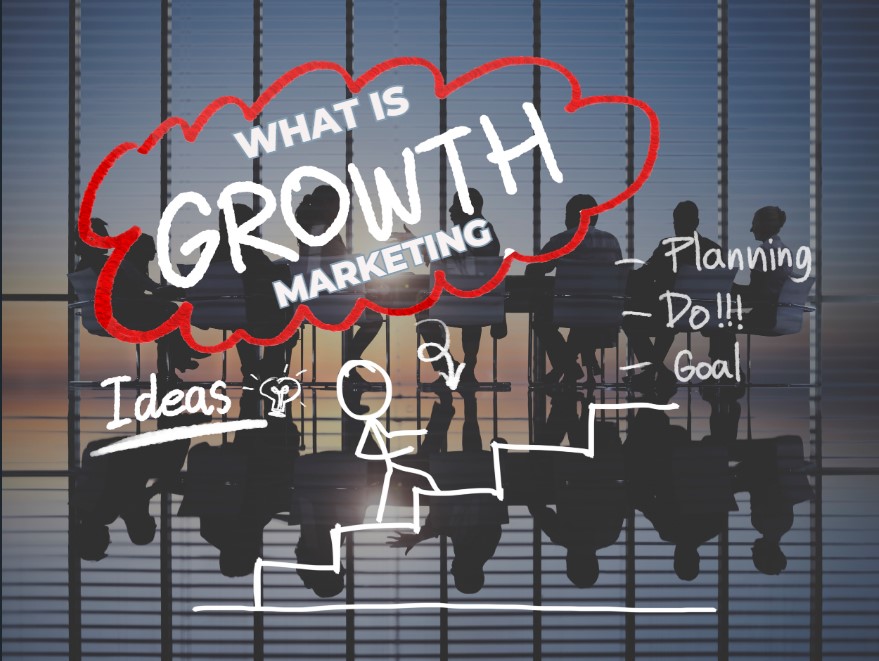
Comprehensive SEO Techniques and Strategies for 2024
August 29, 2024
How to Turn Prospects into Loyal Clients
September 5, 2024
Growth marketing isn’t just about making noise. It’s about creating real and measurable growth. By using data, trying new methods, and refining your approach, you can achieve meaningful results. First, understand your audience deeply. Then, test new ideas and focus on what works to boost your returns.
In this blog, we will explore how to unlock your business’s potential with growth marketing. We’ll cover how to use data, improve acquisition channels, and try new tactics. This will help you drive growth, increase ROI, and reach your target audience more effectively. Whether you’re a startup or an established business looking to grow, these tips will help you on your journey.
The Evolution of Growth Marketing
In today’s competitive landscape, growth marketing strategies have become crucial. Unlike traditional marketing, which often focuses on broad tactics, growth marketing seeks efficient and scalable ways to drive measurable growth. Therefore, it emphasizes experimenting with various approaches to find the most effective methods. Furthermore, growth marketing relies heavily on data to optimize every stage of the customer journey, from acquisition to retention. Consequently, the goal is to identify and amplify strategies that deliver the best results through continuous testing and iteration.
Why Growth Marketing Matters
So, why should you care about growth marketing? Simply put, it’s a strategic approach that helps businesses scale effectively. To start with, growth marketing strategies are designed to be scalable. They focus on techniques that grow with your business and support increased investment in proven tactics. Additionally, by leveraging data and focusing on what works, growth marketing maximizes ROI, removing the guesswork of traditional methods. Moreover, growth marketing’s emphasis on experimentation and analytics allows you to quickly adapt to changes in the digital landscape, keeping you ahead of the curve.
Key Strategies to Accelerate Growth
Data-Driven Decision Making: Data-driven decision making is a cornerstone of effective growth marketing strategies. Initially, you should analyze metrics and trends to guide your efforts, ensuring that strategies are based on concrete evidence rather than guesswork. For example, data provides valuable insights into customer behavior, campaign performance, and market trends. Consequently, you can identify successful tactics and areas needing improvement. Tools such as Google Analytics and CRM systems are useful for tracking key metrics and providing a clear picture of your marketing effectiveness.
Leveraging Content Marketing: Content marketing is another powerful component of growth marketing strategies. To begin with, creating and distributing valuable content helps attract and engage your target audience. Different types of content serve various goals; for instance, blog posts can improve SEO and drive traffic, while videos can boost social media engagement. Furthermore, strategies for creating engaging content include focusing on solving audience problems and providing actionable insights. HubSpot’s success with high-quality, informative content illustrates how effective content marketing can drive substantial organic traffic and nurture leads.
Optimizing Customer Acquisition Channels: Identifying and optimizing your customer acquisition channels is crucial for effective growth marketing. Each channel, such as SEO, PPC, and social media, has unique strengths for reaching different audience segments. Therefore, you should analyze where your target audience spends their time and how they engage with brands. Additionally, regularly monitor and adjust your campaigns based on performance metrics. For example, optimizing social media ads with precise targeting and compelling visuals can significantly enhance their effectiveness.
Implementing Growth Hacking Techniques: Growth hacking involves experimenting with unconventional tactics to achieve rapid growth. This mindset encourages creative problem-solving and the efficient use of resources. For instance, Dropbox’s referral program, which rewarded users with additional storage for inviting friends, resulted in exponential user growth. To incorporate growth hacking into your strategy, foster a culture of experimentation, test new ideas, and pivot based on data insights.
Measuring Success and ROI
- Key Metrics to Track: Measuring success and understanding ROI are essential when implementing growth marketing strategies. Key metrics to monitor include Customer Acquisition Cost (CAC), which indicates how much it costs to acquire a new customer. Additionally, Customer Lifetime Value (LTV) estimates the total revenue a customer will generate over their lifetime. Tracking conversion rates shows the percentage of visitors completing desired actions, while the churn rate measures the percentage of customers who stop using your product or service. Tools like Google Analytics and CRM systems can help track these metrics effectively.
- Interpreting Data and Adjusting Strategies: Analyzing data effectively leads to actionable insights. Start by identifying trends and patterns in your data. For instance, look for correlations between different metrics, such as how changes in your acquisition channels affect conversion rates. Use this analysis to refine your strategies. If a channel or tactic is underperforming, consider reallocating resources to more effective areas and adjusting your approach to improve performance.
Case Studies and Success Stories
- Company A: Growth Marketing Success: To illustrate the impact of growth marketing, consider Company A, a tech startup that achieved remarkable results through these strategies. Initially, Company A struggled with scaling but turned things around by implementing a robust content marketing plan, optimizing landing pages, and using targeted social media ads. As a result, the company saw a 150% increase in website traffic, a 30% boost in conversion rates, and a significant reduction in customer acquisition costs.
- Company B: Growth Hacking Triumph: Another example is Company B, an e-commerce brand that used growth hacking to gain a competitive edge. Company B launched a viral giveaway campaign and encouraged user-generated content, leading to a 200% increase in social media engagement and a 50% boost in website traffic. This success highlights how creative growth hacking techniques can rapidly expand brand reach and drive business growth.
Tips for Getting Started
- Assessing Your Current Marketing Strategy:
Before adopting new growth marketing strategies, evaluate your current efforts. Start by conducting a comprehensive audit of your marketing activities, reviewing performance data, and assessing channel effectiveness. Identify strengths and weaknesses to understand where to focus your resources. - Developing a Growth Marketing Plan: After assessing your strategy, develop a growth marketing plan. Include clear goals, target metrics, and detailed strategies for each component of your growth marketing efforts. Set realistic timelines and SMART goals to ensure a balanced approach.
- Finding the Right Tools and Resources: To implement growth marketing effectively, use the right tools and resources. Tools like Google Analytics, SEMrush, and HubSpot can help with data analysis, campaign management, and customer engagement. Additionally, stay updated with industry trends by following relevant blogs and participating in professional groups.





